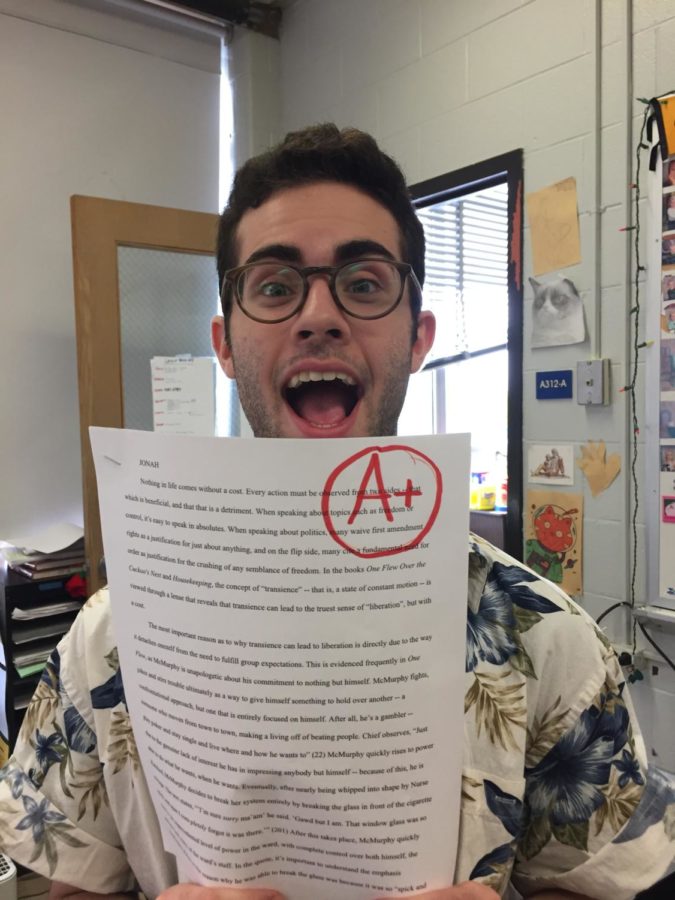How to right good
BAM!! Now that I have your attention, let’s talk about good writing. But what is good writing? How do you do it? What makes a piece of writing “good”?
These may all seem like impossible questions to answer. But, you, yes you, by reading this article will be well on your way to becoming the best writer in the entire world, although, I expect many people to read this, so it’ll be a pretty big tie for first.
So. Let’s. Get. Right. Into. It.
First, use straightforward and clear transitions. This means sticking to first, second, third, fourth, etc. This reduces confusion and makes the whole piece flow well. Don’t try to get fancy with words such as next, furthermore, moreover, etc.
Second, also use lots of fun Latin abbreviations such as etc., i.e., e.g., etc.
Third, don’t worry if you don’t know the difference between i.e. and e.g.—chances are your reader won’t either.
Fourth, circling back to the sentence broken by seemingly pointless periods. This is also an important time to acknowledge that explanations do not need to be directly connected to the thing they are referring to. Mix it up, make your reader think.
Fifth, so why the periods? Simply put, it adds emphasis. Other great ways to add emphasis include CAPITAL letters, and changing up fonts mid-sentence.
Sixth, and this brings me to a broader point. Don’t be afraid to make your language modern. Some English teachers aka dinosaurs, may reject this. However, learn from Twitter and co-opt what you see. Capitalize random Nouns like our rhetorically-gifted president or break your Essay into 168 different sentence-long paragraphs in the Spirit of those always fantastic Twitter threads. If you fail to do this I have one word for you. SAD!
Seventh, don’t be afraid to get big. Now you may have been given a paragraph-long response, but that is just a minimum. If you want to expand that and write a rambling ten page essay on the meaning of love, life or the name Jonah, do it. Your English teacher will appreciate your dedication and won’t care that you didn’t even once refer to the assigned text.
Eighth, dont proofread. Good writers only need one shot to nock it out of the park. This means write it once, in one sitting, and then turn it in. There’s no need to stress over silly punctutation’ marks or spelling—if the writing is good; the reader will understand.
Ninth, the mark of a truly enlightened and learned writer is a combination of archaic references and injections of words in other languages when boring, old English won’t cut it. Do you have a obscure 10th century Norwegian poem that you just adore? Did you just google some cool Latin phrases? Either way, inject those phrases and craft heavy-handed analogies that only someone as well-read as you would understand.
In many ways an essay is like Queen Skade—the iron pine-tree’s daughter—who bore many of Odin’s mighty sons in that good writing leads to more good writing. If you didn’t catch the reference it was from “Háleygjatal,” a 10th century skaldic poem by Eyvindr Skáldaspillir about the establishment of the Hlaðir dynasty.
Tenth, and in conclusion, conclude each of your pieces with a clear transition that you are finishing your piece. If you have been told that in conclusion is the death kiss of all good writing, use some alternate transitions such as “to conclude,” “in summation,” “as I so concisely and eloquently explained above,” or my personal favorite “this is the end of my essay, thanks for reading, I hope you enjoyed, and just a gentle reminder here is my main point,” then you restate your thesis word for word.
In conclusion, this is the end of my essay, thanks for reading, I hope you enjoyed, and just a gentle reminder that I just taught you how to be the best writer the world has ever seen as long as you follow the tips above. Please like, share and subscribe.



student person • May 14, 2018 at 7:16 pm
truly a masterpiece. thank you Lord Alvarez.